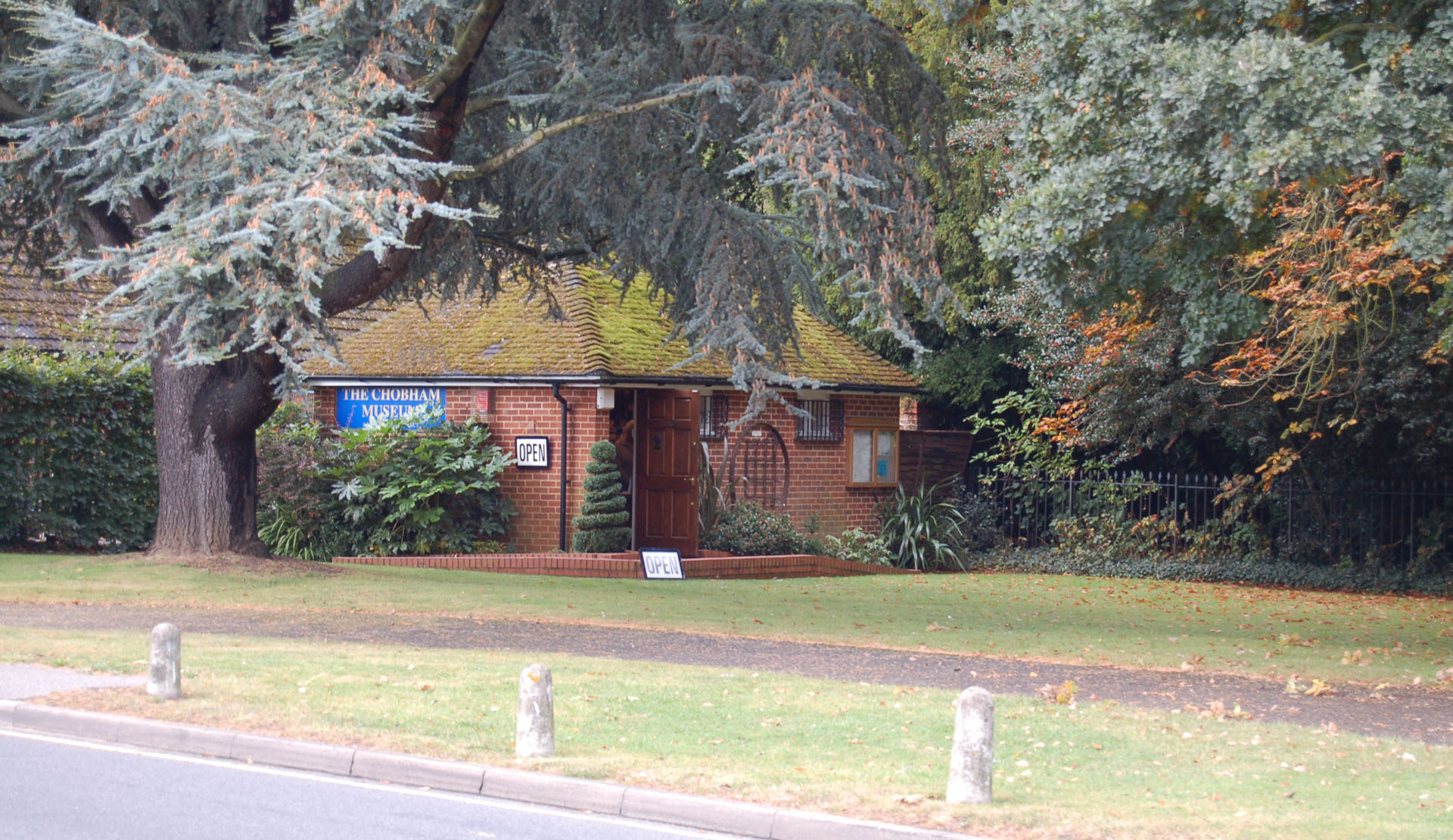Teresa Brooks wrote the following for the Chobham Parish Magazine – December 2000.
Since coming to Brook Place Ecumenical Centre 3 years ago, I have discovered the fascinating history of the house. You may be interested to hear about it –
In medieval times Chobham was one of four demesne manors of Chertsey Abbey, the others being Egham, Thorpe and Chertsey. Chobham was the largest and most remote from the motherhouse.
Brook_Place.GIF (13316 bytes)In the early 14th century, William de Brok was a tenant farmer of the Chertsey Abbey Lands in Chobham and during the 15th century a Nicholas Atte Brok lived in Chobham, but it is not known whether either of them gave their name to the site.
It is known, however, that in 1648 an Elizabethan house on the site was the property of Edward Bray. He had been given the house by Charles 1, as a reward for raising a troop of horses during a time of need.
This building is thought to have partially burned down around 1654, and the present house, a prominent red-brick Dutch-gabled construction, was built in 1656. The owner at the time was William Beauchamp.
The present house was built from Dutch bricks that were transported by barge to the Cotswolds, where sheepskins and wool were collected for the return journey. The chimneys in the centre of the house were considered quite innovative, being an early form of central heating.
The main house was originally split into domestic and family areas, and an entrance from the East wing opened into a scullery and a dairy. Both these rooms were set below ground level to keep them cool, and were arranged either side of the main staircase leading to the bedrooms, and on up to the attics (presumably the servants’ atiarters). The dairy had a balustraded area below the ceiling which allowed air to circulate, as an aid the cheesemaking process.
Brook Place House was the main residence of the working farm and just behind the main building is a granary, now used as a chapel. There is also a bam in the 23 acres of grounds, which was used as a store until the 1960s. Although subsequently enlarged, the original bam would have been constructed just before 1656, and would have provided accommodation for the craftsmen building the main house.
Close to the granary is a well dating from Cromwellian times, and there was a second well to the East of the house (outside the then scullery) which has now been covered in. Legend has it that there was an underground passage running from this well under the Bagshot Road. It is not clear whether its purpose was to transport grain across the road, or to allow fleeing priests to escape to the nearby nunnery! A priest’s hole in the house may have given rise to this story.
The dining room is fitted with original carved wooden panelling from Peter Paul Rubens’ house near Amsterdam, and also contains a large unsupported fireplace, complete with inglenook and drinking handles – intended to offer support whilst building up the fire!
The property remained as a working farm until the early 1950s, when it was acquired as a family home. South Park Community Trust purchased Brook Place in 1987. Its aim is to provide a meeting place and residential centre for Christian groups and a communications media centre.
